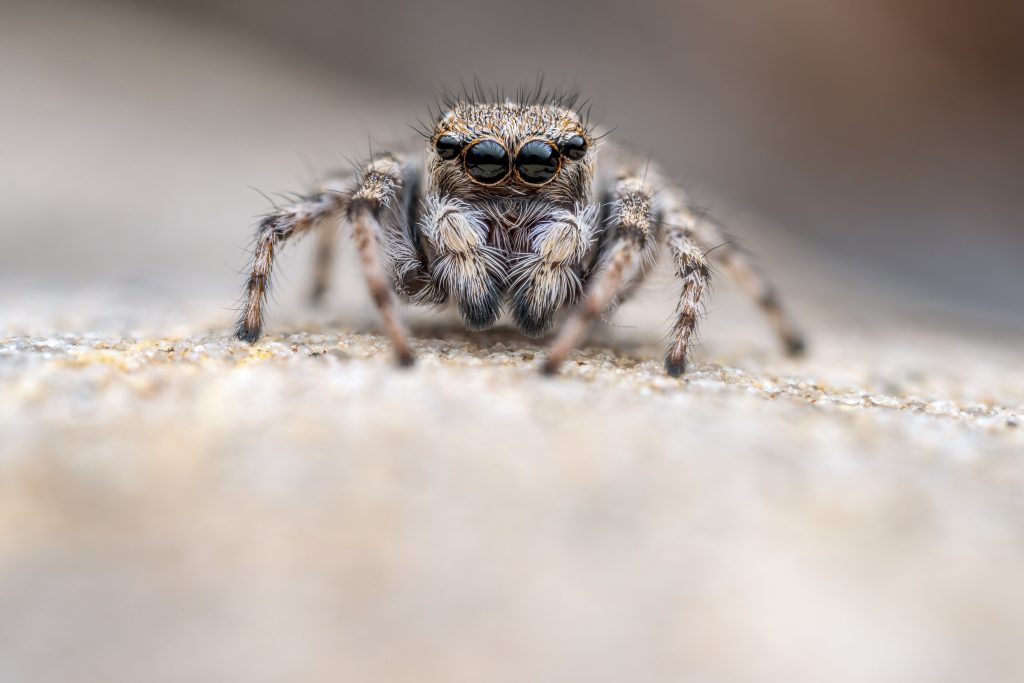
Buglife, the RSPB and Kent Wildlife Trust have come together to save one of Kent’s most important wildlife sites. The three organisations are urging the Government’s environmental advisor Natural England to protect the site by declaring it a Site of Special Scientific Interest (SSSI). Today the groups presented a “Rationale for the SSSI designation of the Swanscombe Peninsula” to Natural England, alongside a letter signed by 77 current and former senior staff from nature organisations and public bodies.
Recent surveys have revealed that the Swanscombe Peninsula is home to more rare and threatened species than any other brownfield site in the UK – including the Critically Endangered Distinguished jumping spider (Attulus distinguendus), which is found on only one other site. However, this rich diversity of life is under-threat from plans to build a theme park. This development plan has, bizarrely, been deemed a Nationally Important Infrastructure Project, a process normally reserved for major roads, airports or power plants, that will allow it to bypass many of the normal planning requirements.
Swanscombe Peninsula is what is known as a brownfield site – a site that has formerly been developed, often for industrial use. However, this 465 hectare site has returned to nature over time – it has rewilded itself – and that process has produced a great bounty of wildlife riches. Many once widespread species call the site home, including over 200 rare and threatened invertebrate species such as the Endangered Duffey’s bell-head spider (Praestigia duffeyi), Brown-banded carder bee (Bombus humilis), Saltmarsh shortspur beetle (Anisodactylus poeciloides), and the Orange-striped water beetle (Graphoderus cinereus). Swanscombe Peninsula is also home to rare plants such as the Man orchid (Aceras anthropophorum), important breeding birds such as Nightingale and Black redstart, bats, reptiles and water voles.
Wildlife-rich brownfield sites on the Thames Estuary have become harbours for rare and threatened species that were once found more widely. But they are no longer safe harbours. We have seen many sites destroyed and only two large brownfields remain intact and free from development permissions. One, Canvey Wick in Essex, is an SSSI and the other, Swanscombe Peninsula, is imminently threated with destruction to make way for the theme park.

Matt Shardlow, Chief Executive of Buglife, commented, “Biodiversity is in crisis, wildlife populations, particularly of insects, are in steep decline, many habitats and specialist species are increasingly rare and their fragmented populations are at risk of extinction. Too few wildlife-rich brownfield sites like Swanscombe Peninsula are protected, and this is the last chance to protect a large Thames Estuary brownfield site before it is too late. This is one of only 2 sites nationwide for the Distinguished jumping spider. If the development is allowed on the Swanscombe Peninsula, this will push this special spider a step closer to national extinction.”

Richard Bloor, Wilder Towns Manager at Kent Wildlife Trust said, “At a time where the UK is seeing a devastating loss of nature and wildlife, it is essential that we formally protect nationally important sites like the Swanscombe Peninsula for the wildlife that depends on them and for the survival of our natural world and future generations. Swanscombe is one of the last remaining wildlife rich brownfield sites in the Thames Estuary, with habitats ranging from dry bare earth, which is vital for invertebrates, to complex wetlands, which support a great diversity of birds, reptiles and mammals.”
Emma Marsh. RSPB England Director said, “The RSPB is increasingly concerned about the cumulative threat of unsustainable development on nature across England. In September, the Prime Minister announced the government’s “30 by 30” pledge – a commitment to protect 30% of UK land for biodiversity by 2030 – calling for immediate action and avoiding dither and delay. Saving nationally-important wildlife sites like Swanscombe is surely an easy win on the road to meeting that commitment.”
The purpose of SSSIs is to safeguard, for present and future generations, the diversity and geographic range of habitats, species, and geological and physiographical features, and where Natural England is of the opinion that land is of special interest by reason of its flora, fauna, or geological or physiographical features, it is the duty of Natural England to designate an SSSI.
The site supports a nationally important assemblage of terrestrial invertebrates, populations of aquatic invertebrates of high conservation value, and a nationally significant population of the Tentacled lagoon-worm (Alkmaria romijni), the habitat of which is protected under the Wildlife & Countryside Act (WCA) (1981). In total there are over 200 invertebrate species of conservation concern, and 49 red listed species, including the Critically Endangered Distinguished jumping spider (Attulus distinguendus). It also supports a regionally important breeding bird assemblage including 15 red-listed Birds of Conservation Concern and 12 Species of Principal Importance, 13 nationally scarce vascular plant species, including 5 red-listed species, and populations of reptiles, bats, Water vole (Arvicola amphibious) and Otter (Lutra lutra). The overall value and uniqueness of the site with its mosaic of habitats is demonstrated by the sheer taxonomic breadth of the species of conservation concern.
Please support the ‘Save Swanscombe Marshes’ campaign by adding your name to the 19,000 plus people who have already signed the petition to protect the site.


